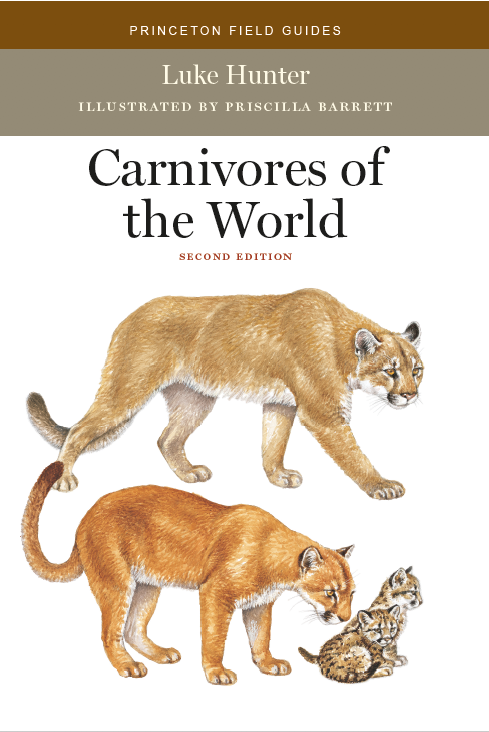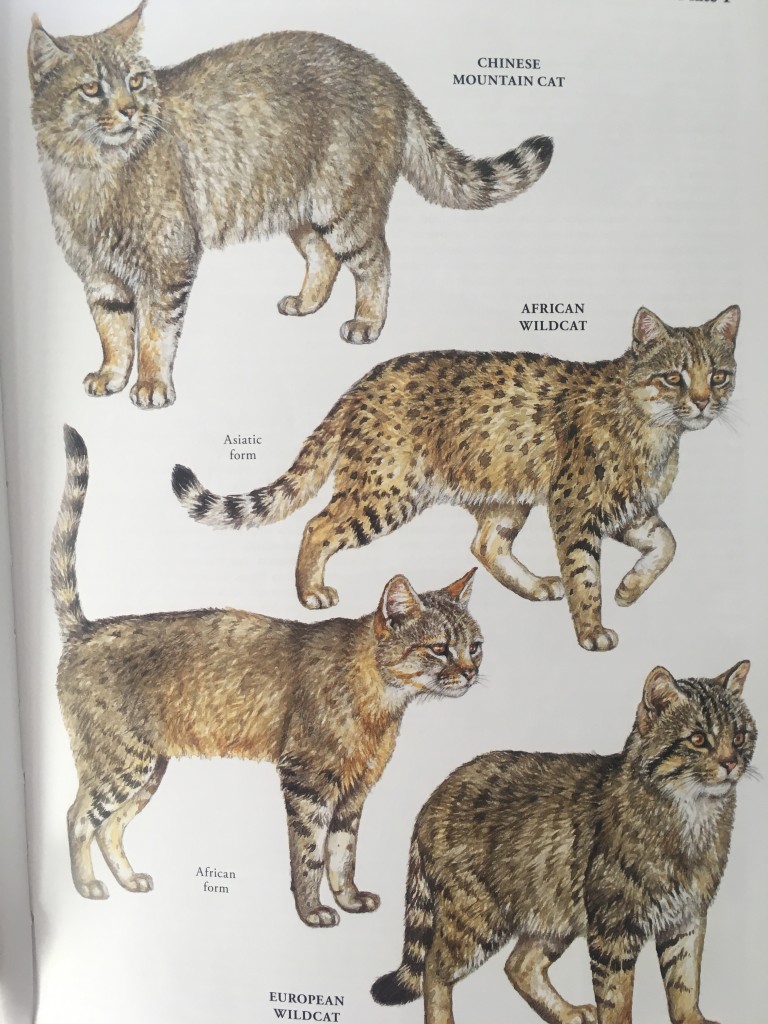Book Review: Carnivores of the World (2nd edition)

Here’s the latest in the Princeton Field Guide series based around groups of mammals of the world.
Luke Hunter’s book covers 250 species of carnivores from the Polar Bear through to the Least Weasel. There is 1/4 to 1/2 a page of text on each species to accompany beautiful illustrations on 93 color plates from Priscilla Bartlett covering every species and many sub species.

If, like me, you had the first edition from 2011 then you are going to want to know what has changed. Well, this fully revised – larger format – version includes coverage of 9 “new” species like the African Wolf as well as information on Coyote/Wolf “hybrids”. That said, without doing a full comparison I suspect the book is a little more taxonomically conservative than the 2018 Canids of the World, also from Princeton. Only one species of Raccoon Dog is included for example, though the author gives a nod towards the possibility of a second species. The second edition also includes the latest data on population trends and conservation status.
For more information here’s an interview with Luke Hunter, the author. *** Some shameless self-promotion, but great to see he has read this paper too.***
Although the book could be useful for identification from time to time, especially to see the latest thinking on taxonomy, I cannot imagine it is something you would need to use as a field guide often; most of these species are well covered in national or regional field guides and elsewhere. But it is a lovely book to browse through and – dare I say it – to tick off the species you have seen. What a nice gift for that special mammalwatcher in your life! Trying to see all of the planet’s carnivores is a pretty good goal I reckon. And if anyone feels like trying then now is likely the the best – and sadly the last – time in history to try. Amazon Weasel sightings? Anyone? Anyone?
Available for $29.95 at Princeton University Press and many other places.
Jon
7 Comments
-
-
Vladimir Dinets
Eastern and red wolves are totally legitimate species of hybrid origin. There are basically two reasons the issue isn’t settled yet: (1) political pressure from US Republicans opposed to their conservation, and (2) poor education of some zoologists who are still unaware that hybridization is a very common way of evolving new species, in mammals and in pretty much every other group.
-
Conuropsis
Already have it! As Jon, I already had the first edition and always get updated editions as they come. I love it though the painting of the Eastern Coyote doesn’t look like any I’ve seen. I saw one yesterday and they usually look more like Red Wolves, but smaller. I also agree with what Vladimir says. There are many instances of hybrids in the plant and animal worlds that end up being species down the line.
-
Leave a Reply
You must be logged in to post a comment.


Charles Hood
Thank you JH for running a review. This is a very attractive book, but as you say, not truly a field guide since you wouldn’t take it on a trip. Fun to look at though and it is another way to dream about future trips (as if this website were not trouble enough). In terms of taxonomy, it accepts splits of clouded leopard and tigrina but not gray wolf into regular and eastern wolves (thinks the second ones are coyote hybrids) and is similarly skeptical about red wolf as a valid species. Dingo it says is either a dog or a wolf, depending if you want to allow feral dogs their own species name or not. Page size and quality of art make this a fun book to sit down and READ, unlike the larger and heavier references, eg Handbook of Mammals of World, or Princeton’s bovids of the world, which has smaller page sizes and 660+ pages — fatter and smaller than carnivore book, and so harder to read comfortably. / Charles Hood